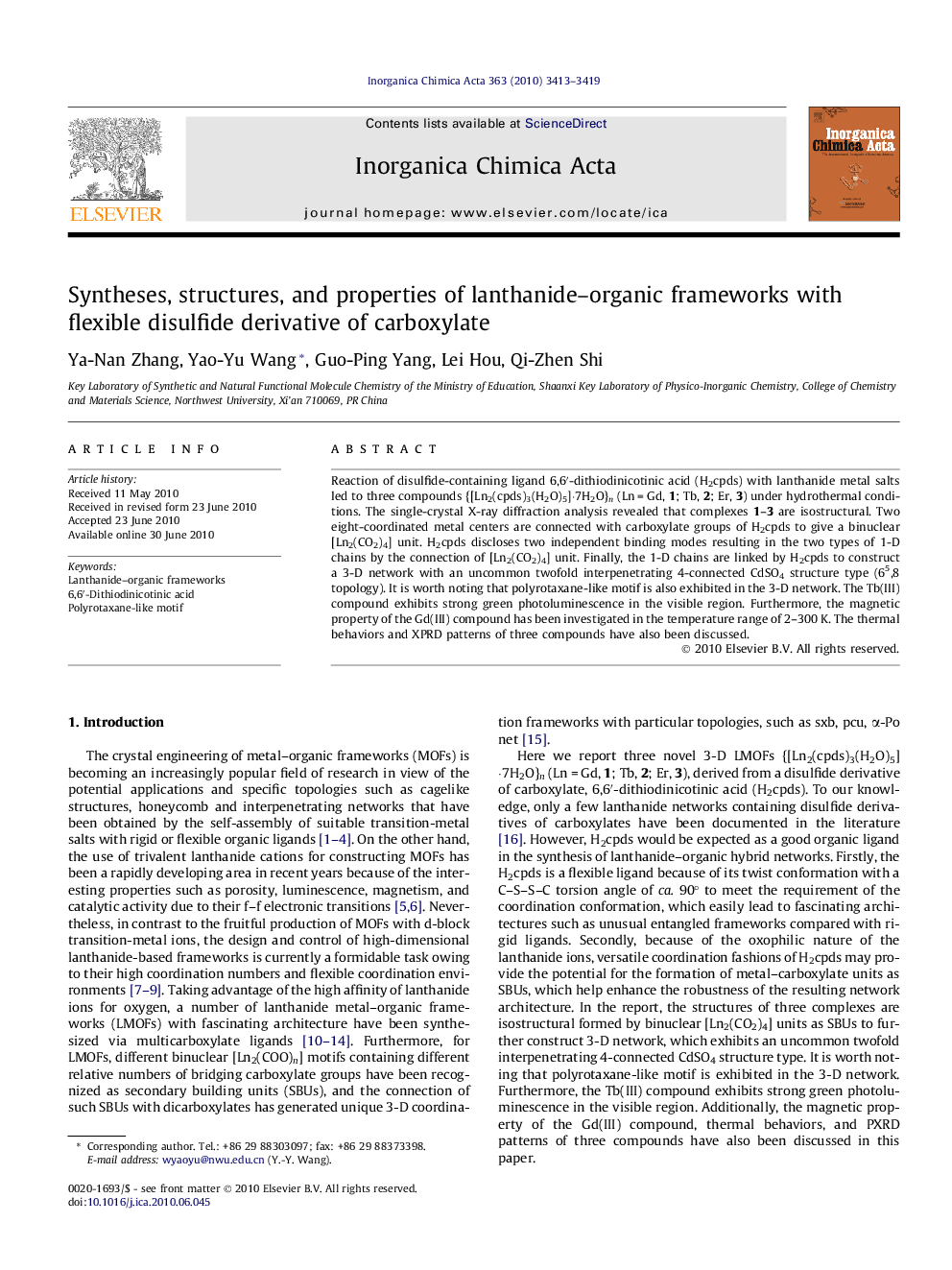| Article ID | Journal | Published Year | Pages | File Type |
|---|---|---|---|---|
| 1311188 | Inorganica Chimica Acta | 2010 | 7 Pages |
Reaction of disulfide-containing ligand 6,6′-dithiodinicotinic acid (H2cpds) with lanthanide metal salts led to three compounds {[Ln2(cpds)3(H2O)5]·7H2O}n (Ln = Gd, 1; Tb, 2; Er, 3) under hydrothermal conditions. The single-crystal X-ray diffraction analysis revealed that complexes 1–3 are isostructural. Two eight-coordinated metal centers are connected with carboxylate groups of H2cpds to give a binuclear [Ln2(CO2)4] unit. H2cpds discloses two independent binding modes resulting in the two types of 1-D chains by the connection of [Ln2(CO2)4] unit. Finally, the 1-D chains are linked by H2cpds to construct a 3-D network with an uncommon twofold interpenetrating 4-connected CdSO4 structure type (65,8 topology). It is worth noting that polyrotaxane-like motif is also exhibited in the 3-D network. The Tb(III) compound exhibits strong green photoluminescence in the visible region. Furthermore, the magnetic property of the Gd(III) compound has been investigated in the temperature range of 2–300 K. The thermal behaviors and XPRD patterns of three compounds have also been discussed.
Graphical abstractAs a contribution to the understanding of the lanthanide complexes with flexible disulfide derivative of carboxylates, we present three dinuclear complexes based on 6,6′-dithiodinicotinic acid generally formulated as {[Ln2(cpds)3(H2O)5]·7H2O}n (Ln = Gd, 1; Tb, 2; Er, 3). They are isostructural exhibiting an uncommon twofold 3-D interpenetrating 4-connected CdSO4 structure type (65,8 topology). It is worth noting that polyrotaxane-like motif is also exhibited in the 3-D network. Additionally, the Tb(III) compound exhibits strong green photoluminescence in the visible region.Figure optionsDownload full-size imageDownload as PowerPoint slide
